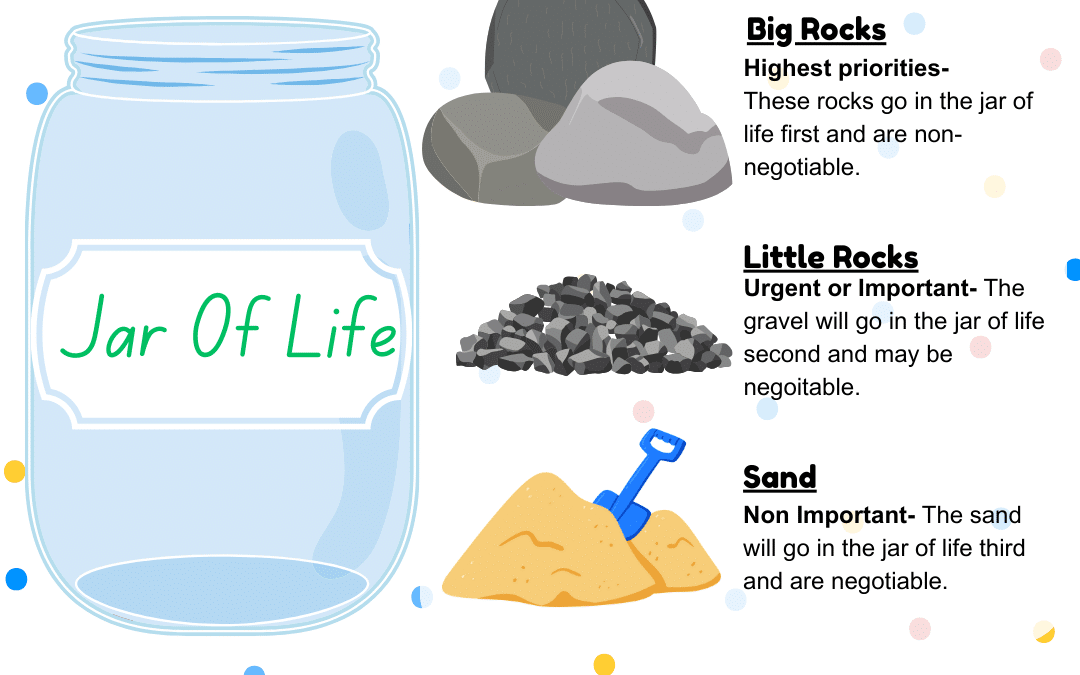In Stephen Covey’s timeless work, “First Things First,” the concept of Big Rocks takes center stage as a powerful symbol of our most crucial priorities. Covey delves into the Eisenhower Matrix, a renowned time management tool that highlights the importance of prioritizing essential, long-term tasks over urgent yet less significant ones. This concept revolves around identifying the key priorities that drive progress in our most significant goals while maintaining a well-balanced life.
To bring this idea to life, Covey introduces the “big rocks first” analogy, designed to inspire individuals to prioritize these vital aspects.
Covey’s narrative invites us to envision a glass jar on our desk, with the empty space within representing the time we have to manage. Alongside the jar, we have large rocks, small rocks (gravel), sand, and a glass of water, each symbolizing the various tasks we must tackle:
1. Big Rocks: These are the embodiment of our primary objectives and long-term goals.
2. Small Rocks: They represent our day-to-day responsibilities and shorter-term targets.
3. Sand:Signifying minor tasks of lesser importance.
4. Water: Reflecting the distractions that often hinder our productivity. (and makes things messy too)
Covey encourages us to consider the consequences of approaching tasks inversely, starting with the urgent yet less important ones. This approach involves beginning with emptying the water (distractions) and gradually adding sand (minor tasks) and gravel (daily responsibilities). By the time you attempt to include the big rocks (most critical priorities), they no longer fit into your day.
This concept underscores the importance of initiating tasks with a focus on the more critical, high-level goals. It serves as a reminder that when we become entangled in the minutiae, we risk neglecting the fundamental priorities that truly matter.



